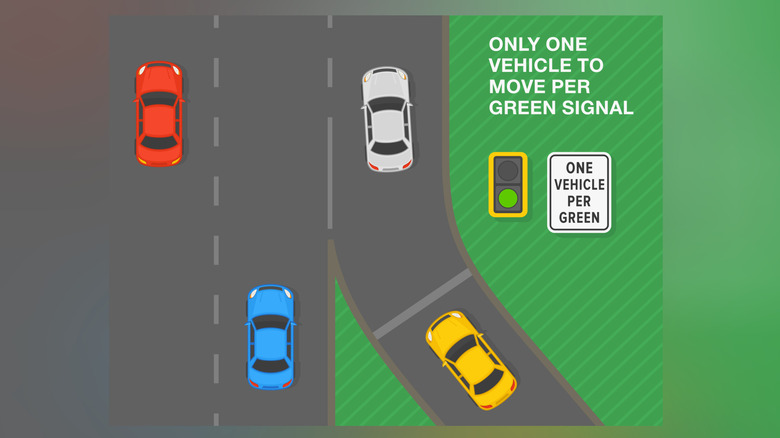You Really Shouldn't Use The Merge Lane To Get Around Stalled Traffic (Here's Why)
One would assume that since the merging lane seems empty, you can use it to pass all the stalled traffic up ahead. While it sounds like a foolproof plan, however, the merging lane is made especially for drivers to merge into a lane where there is a bottleneck up ahead. Depending on your location in the main lane, either it's your right of way or you have to let the vehicles in the merging lane merge.
Making an overtaking maneuver via a merging lane is not only dangerous, as merging lanes are to be used cautiously, but it is also illegal as per Florida statute 316.084. Law enforcement looks for such driving habits and shortcuts, and it is enough of an offense to land you in trouble, with fines ranging from $238 in states like California and one DMV point assessed for the violation for unsafe driving on a three-lane highway.
Besides, it's like jumping the queue at Disneyland. Sure, you can get away with it sometimes, but people are going to notice, and they will not always give you a free pass. It can escalate into road rage, particularly in states like Louisiana, which is often considered the road-rage capital. With 30% of cars fitted with dashcams, according to Auto Insurance, and millions planning to install them, you will have a hard time explaining to law enforcement why you misused the lane. In this case, the cons outweigh the pros massively; saving a few seconds or, at best, a few minutes is not worth risking your safety and making others angry for no reason.
The correct way to merge lanes
According to a study conducted by NHTSA in 2021, about 8.7% of crashes happen at merging lanes or because of improper merging. So to understand how to safely merge into a lane, we need to understand why merging lanes exist. Merging lanes are designed to give drivers distance to accelerate or decelerate and adjust their speed relative to the mainline traffic before joining the lane, which reduces abrupt maneuvers and rear-end collisions. It offers a designated area for merging, which improves judgment and makes traffic flow more predictable, making for a smooth and safe transition. Moreover, it actually increases capacity and throughput by reducing turbulence and maintaining average speed.
There are a few key things to keep in mind while merging. If you're in the merging lane and you see a car slightly ahead of you in the main lane, then it's their right of way, and you should reduce your speed to let the car pass first, indicate, and slowly merge into the lane. Subsequently, if the car in the merging lane is ahead and wants to merge, it's their right of way; the car in the main lane must reduce their speed and let the vehicle merge safely.
Lastly, modern cars are equipped with advanced blind spot monitoring systems, or BSD. If your vehicle has such features, you should enable and use them, as they can aid and sometimes prevent crashes. As for folks driving older cars, just be cautious while merging.

